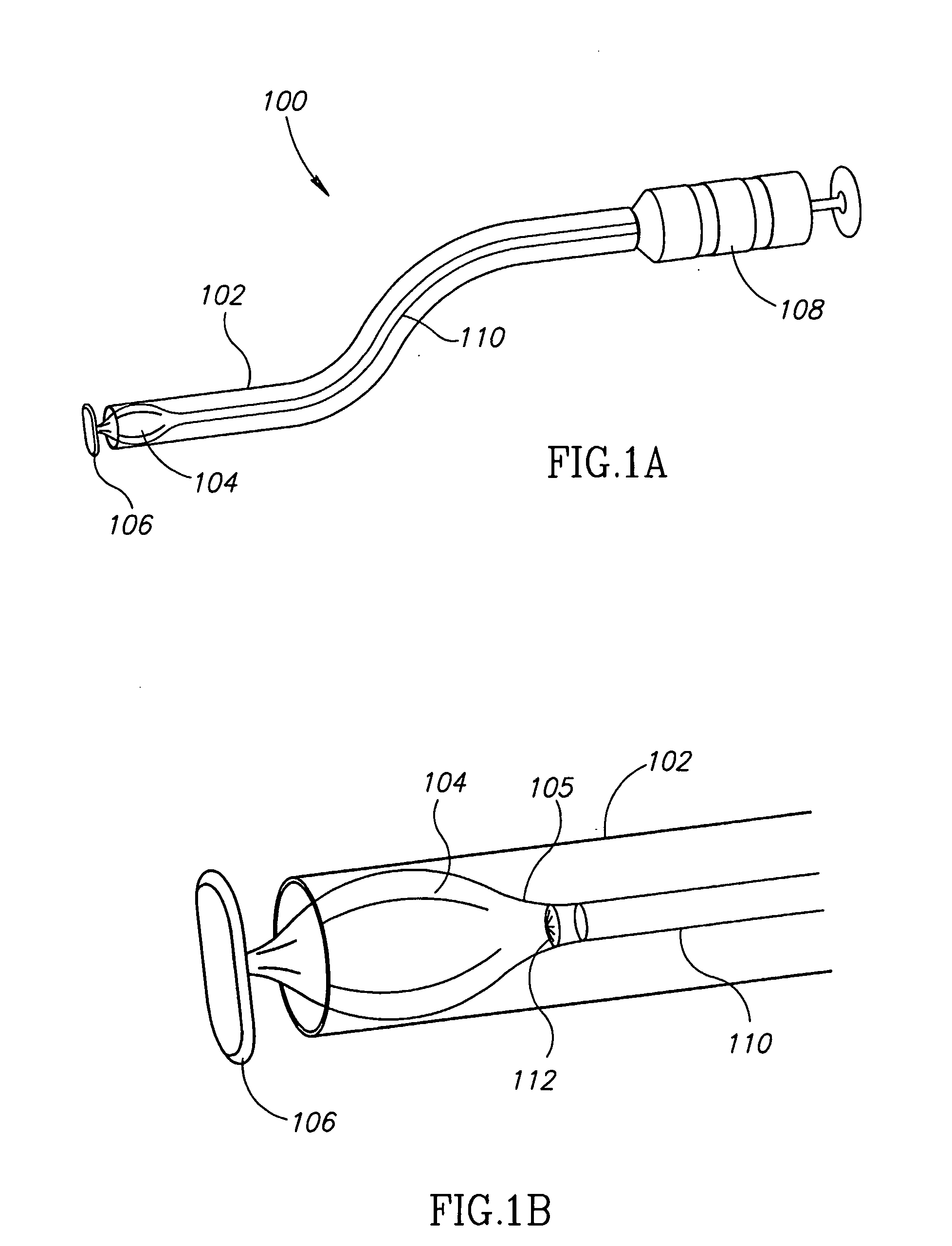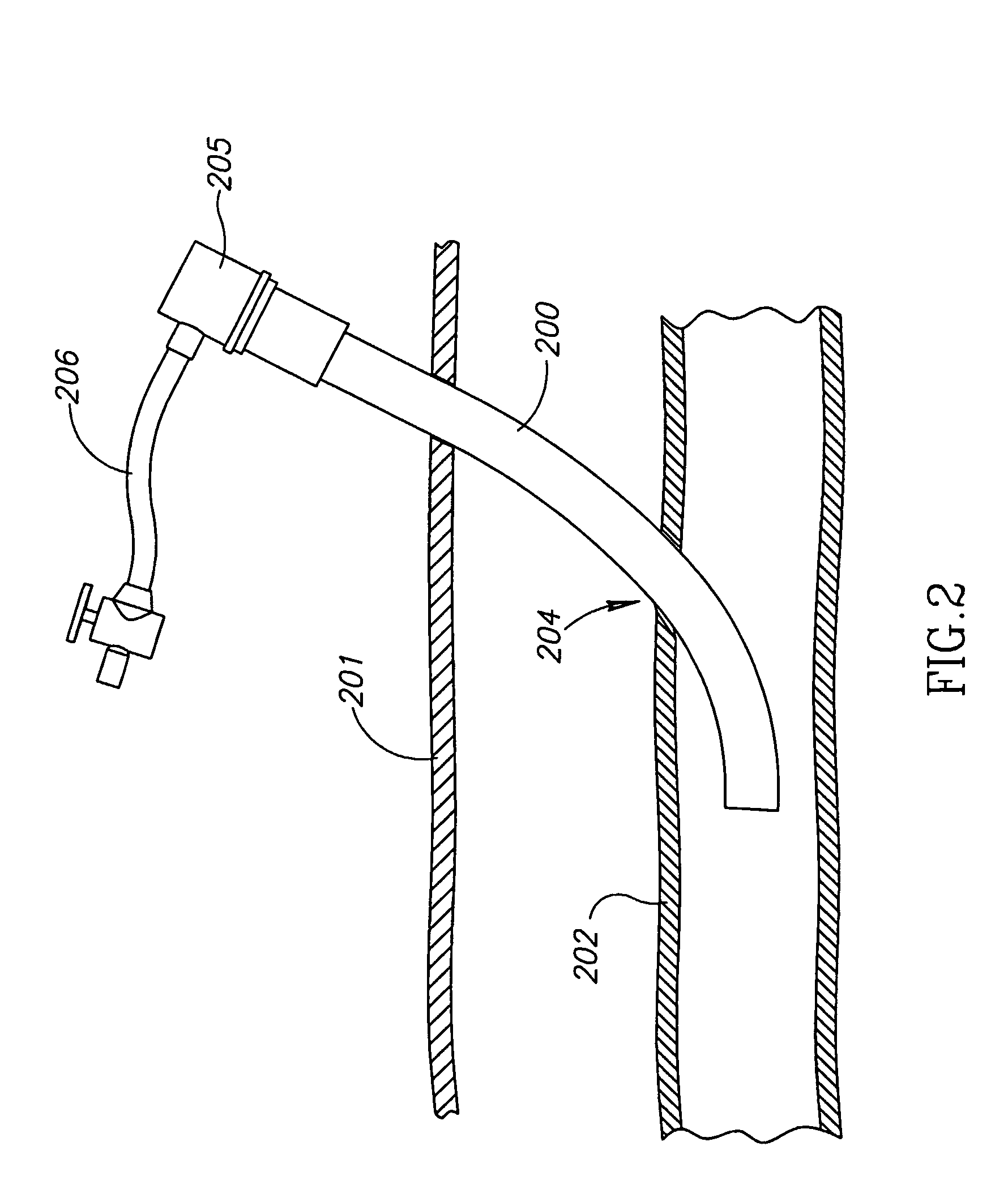Biodegradable Closure Device
a technology of closure device and biodegradable material, which is applied in the field of biodegradable closure device, can solve the problems of reducing the blood flow risk, requiring hours without the involvement of the patient, and hematoma risk, so as to prevent bleeding
- Summary
- Abstract
- Description
- Claims
- Application Information
AI Technical Summary
Benefits of technology
Problems solved by technology
Method used
Image
Examples
Embodiment Construction
[0071]FIG. 1A shows a system 100 for hemostasis of a hole in a blood vessel wall. A flexible tube 102 has a balloon 104 inside it near the distal end, and there is a rod-shaped anchor 106, just past the distal end of flexible tube 102, attached to balloon 104. Balloon 104 is shown in a collapsed state. A syringe 108 filled with saline solution is located on the proximal end of tube 102, and is used to expand the balloon through a filling tube 110, which runs through tube 102.
[0072]Alternatively, there is no tube 102, and system 100 consists of balloon 104, anchor 106, filling tube 110, and syringe 108. Having a tube 102 around the filling tube and balloon has the potential advantage of protecting these parts, and making it easier to place them into a blood vessel as will be described below in FIG. 3, for example by providing greater stiffness.
[0073]Alternatively, instead of balloon 104, there is an expandable biodegradable sponge.
[0074]FIG. 1B is a more detailed view of the distal e...
PUM
 Login to View More
Login to View More Abstract
Description
Claims
Application Information
 Login to View More
Login to View More - R&D
- Intellectual Property
- Life Sciences
- Materials
- Tech Scout
- Unparalleled Data Quality
- Higher Quality Content
- 60% Fewer Hallucinations
Browse by: Latest US Patents, China's latest patents, Technical Efficacy Thesaurus, Application Domain, Technology Topic, Popular Technical Reports.
© 2025 PatSnap. All rights reserved.Legal|Privacy policy|Modern Slavery Act Transparency Statement|Sitemap|About US| Contact US: help@patsnap.com



